How to (Start) Freeing the Jaw
AKA How to learn to play a wind instrument when you don't play one
Happy Fall Y’all!
(yeah I’m from Alabama)
I hope you enjoyed the Mr. Yellow shenanigans last week. Please take your time with that activity and explore how the head can lead the whole movement on the way down (and up). There are a few mobility markers in that activity that I think can help anyone!
I’ve also updated the Rubrics of the Technique post. This will continue to be updated as I fill out the blog with moooore. mwahaha
Begin Post!!
I thought I would share a little method for loosening the jaw that I was shown by my teacher, Beret. If you’re one of her students, this will be nothing new, but I think it’s a very helpful thing to practice as so many of us complain of excessive jaw tension.
Before I show you this technique, I want to add in the caveat that you can loosen your jaw simply by STOPPING and imagining the muscles of the neck, face, and jaw softening and expanding. That’s the skill we ultimately want to have!
Introducing the World’s Most Advanced Jaw Relaxer
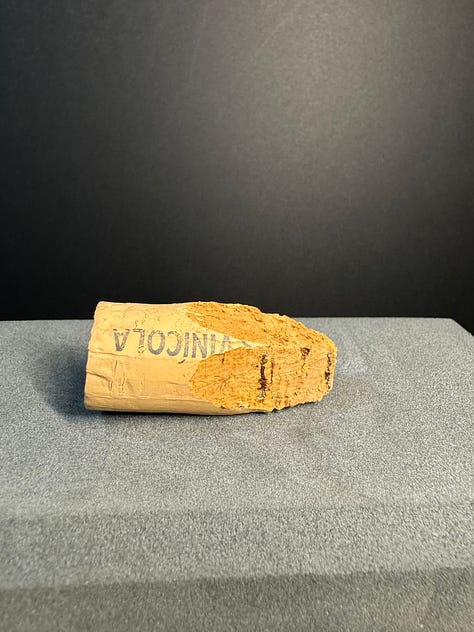
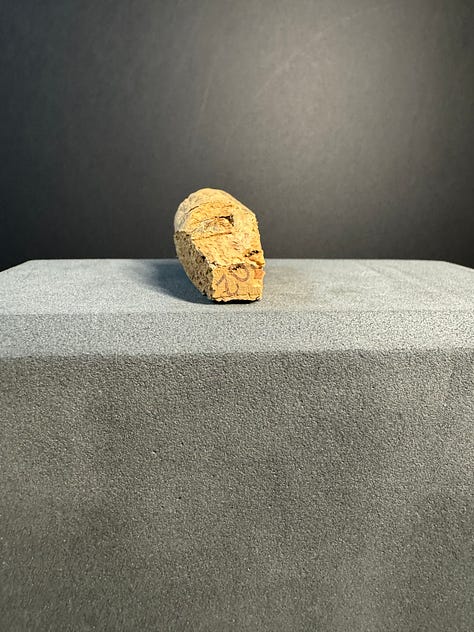
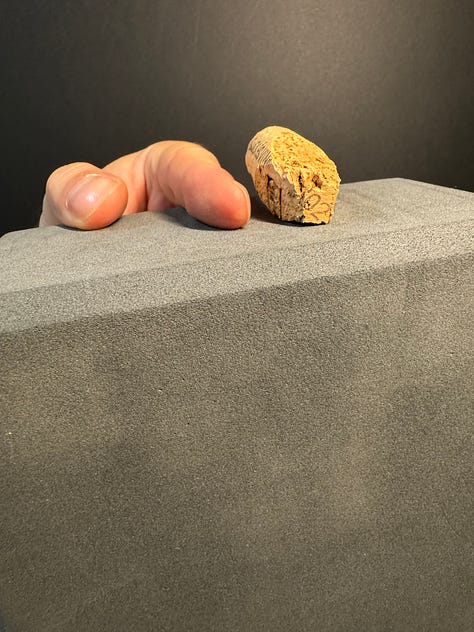
Ta Da! Complicated, eh?
This wine cork has been WASHED WITH SOAP AND WATER and cut with a bread knife on one end. I tried to slim one end down to about the width of my index finger. You don’t need to be perfect with this cut, but you do want to cut it as the standard diameter of a wine cork is a bit too big.
After you’ve cut the wine cork, you’re going to place it into your mouth!
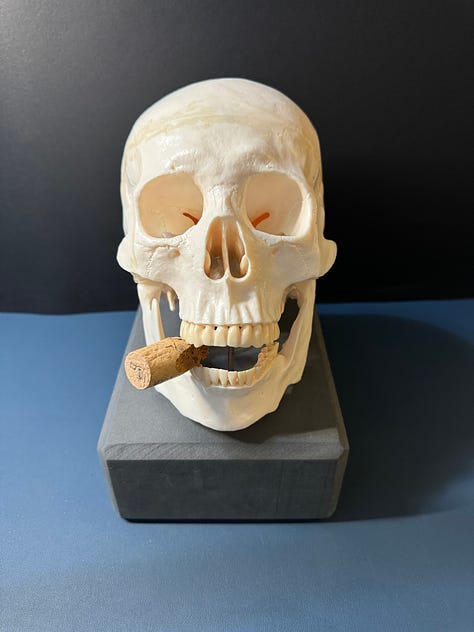
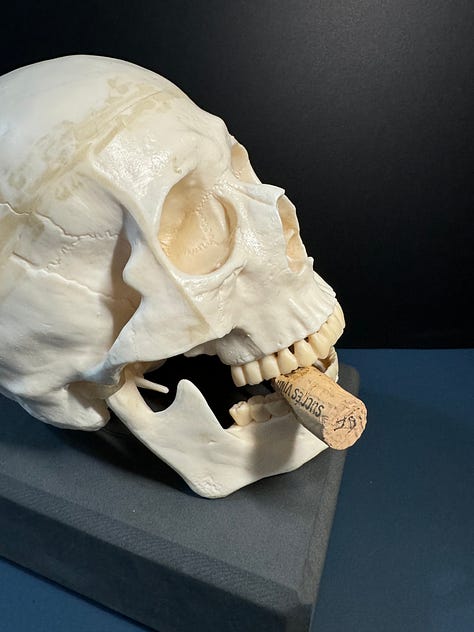
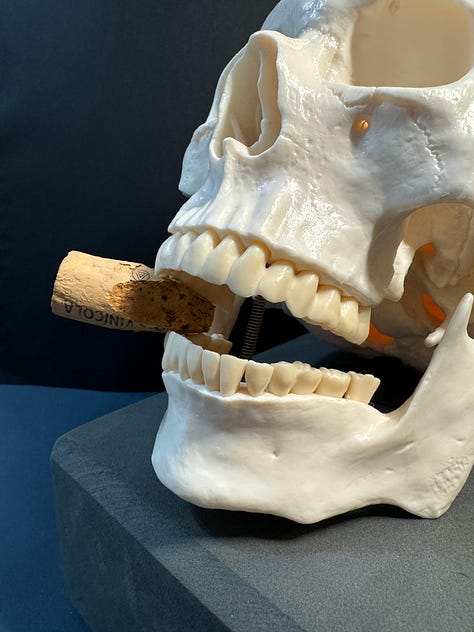
Placement of the Cork
Notice the placement of the cork. I DO NOT place the cork in the front of my mouth; it’s on the sides. You may play with the placement for yourself, but this is the placement that TENDS to be the most comfortable and effective for people. I add this caveat because I do not know what your teeth are like.
How to Bite the Cork
There is no need to apply upward force with the jaw to crush the cork. In the beginning, you can just place the cork between your teeth and try to be gentle with the pressure. If you have tension in your jaw, this cork will feel strange and will begin to give you a jaw stretch within about 30 seconds assuming you have some idea of how to allow the neck to soften as well.
If the neck has locked itself in tension, this must begin to soften for this jaw stretch to really work.
How Does Jaw Tension Feel?
The big jaw muscles run from above the temples down the sides of the face. When we have excessive jaw tension, there is a tendency for pressure to build up along the far back molars. Oftentimes, the cheeks build up a lot of tension and the muscles surrounding the lips (used in whistlin’) lay kinda dormant.
How Do We Want It To Feel?
I’m not sure what’s going on with YOU, but in the saxophone world we want to bring all of this into equilibrium. We want to reduce the tension in the jaw and cheek muscles so that the area around the lips gets used more. This is referred to as a forward embouchure.
We’re going to use the cork in place of a saxophone mouthpiece and begin the process of easing jaw tension and exploring how the whole face can have a little more life in the musculature.
How Long To Use the Cork
There’s no real rule here. I tend to place the cork in my mouth for a minute or two. It all depends on how much I start drooling. Lately, I’ve been using it in between saxophone practice sessions to help relieve tension. You could use them during your lie downs so that you don’t have to spend 15 minutes lying down and then 15 minutes with the cork.
A little multi-tasking never hurt, but I wouldn’t really feel comfortable using the cork for 15 minutes straight.
Things to Explore With the Cork
In Dave Liebman’s book on saxophone playing, he suggests that we want to have equal pressure along the top and bottom teeth (the sides, not the front teeth). As I sit here with the cork in my mouth typing, there are 2 thoughts that I think would help a beginner get started:
Think about the jaw opening away from the skull. Do not pitch up with the head when you think this. Keep this thought of opening very gentle and keep the cork between the teeth.
Allow the furthest back molars to drop away from the skull and see if you can feel like you have a small egg resting inside your mouth. For the love of all that is holy please don’t literally place an egg in your mouth and choke!
Inhale through the nose. Exhale through either the nose or mouth if you choose.
Taking the Cork Out
When I take out the cork, I try to not get into my head about what the ‘right’ jaw position is. I just want to have a rest. If all has gone according to plan, the muscles of the jaw will feel quite different!
Just the Beginning
The jaw has a fairly intricate range of motion. I do not expect this cork to be a magical cure-all. If you take your time, you may find that it is much easier to make small circles with your jaw or slide it very slowly and gently from side to side.1
In the meantime, cut your own cork and try this out! I’d love to hear if you find this helpful!
Get In Touch
Thanks for reading “How to (Start) Freeing the Jaw“! If you’re in NYC, you may learn more about my private teaching practice at johndalto.com.
If you’d like to book any lesson time with me, you can find my booking link here.
Note to beat a dead horse, but if your neck is very tight and you constantly pitch the head up to move your jaw, these exercises will not work!



Thx for this. AND the final sentence in "How does jaw tension feel?" is missing a word.